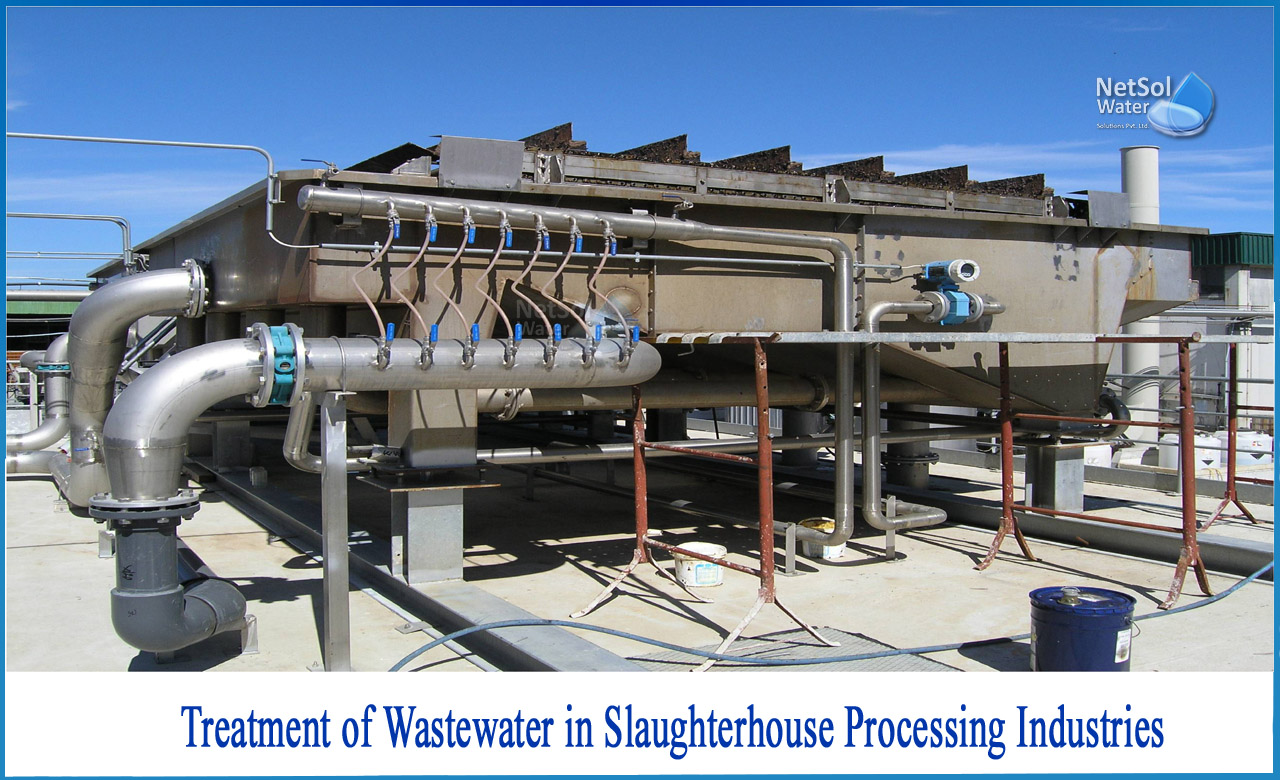How to treat wastewater in slaughterhouse?
The slaughtering of a buffalo involves a number of treatment stages that produce wastewater. Cleaning the transport trucks after offloading the livestock is critical. The effluent is combined with mostly faeces, urine, and straw throughout this procedure. The killed animals are bled after being stunned. When the breast and abdominal organs are removed, the effluent contains mostly fats, oils, and lubricants.
Cleaning wastewater accumulates after all working materials and surfaces have been cleansed, as does cooling water throughout subsequent processing processes. During the slaughter of one buffalo, the total amount of wastewater generated has a BOD of roughly 2,500 grammes and a COD of around 3,000 grammes.
Target
If this effluent is not treated before it is released into the environment, it can cause significant damage. As a result, wastewater treatment is critical in the beef processing industry. The Netsol team has developed effective methods for eliminating nearly all contaminants from wastewater. A screen screw filters out coarse particles such as stones or straw. If material bigger than three millimeters enters the system, it might cause it to get clogged.
Pollutants
Blood, faeces, and urine are the main pollution sources for the slaughtering process, as are wash water (carcasses, floors, utensils, etc.), food leftovers mixed in stomachs, and offal waste. Organic and biodegradable pollutants (BOD, COD, N, and P) are the primary contaminants, and wastewater has a high amount of suspended particles. There are no harmful compounds in general. The amount of processed meat determines the conventional wastewater treatment size.
The following are typical contaminant concentrations during bovine slaughtering
- Flow: 6 – 36 m3/ton
- BOD: 900 – 2200 mg/l
- Suspended solids (SS): 650-930 mg/l
- Organic nitrogen: 120 and 330 mg/l
System layout
When the industrial component is minimal, slaughterhouse and home wastewater can be treated simultaneously.It is necessary to have a decent mixing and equalization volume.Upstream of the public sewer, a separate wastewater treatment plant is usually required.
According to the effluent quality, pre-treatment, secondary treatment, and tertiary treatment are necessary.A mechanical treatment is always the initial phase, followed by a biological (aerobic or anaerobic) therapy, chemical coagulation, and various tertiary therapies.
Step 1: Treatment through mechanical means
Screening, fat flotation, and sedimentation are mechanical treatments.
3–6 mm mesh is used in rotating and vibrating screens.
Dissolved Air Flotation (DAF) with retention durations of 20 to 30 minutes is used to remove fat from a basin as a grease trap.
Sedimentation necessitates a four-hour retention time.
Primary sedimentation is normally constructed as an alternative; however, upstream of an anaerobic compartment, it is not needed.
Step 2: Biological treatment
The most common approach is an activated sludge plant, which requires long aeration times, a lot of air, and a high recirculation rate. It is capable of removing BOD in excess of 95% of the time.
There are no specific requirements on air insufflation techniques, although the dissolved oxygen (DO) content must be at least 0.5 mg/l.
For nitrogen removal, a denitrification zone is placed near the oxidation tank.
When paired with aerobic stages, anaerobic systems produce excellent outcomes. They achieve outcomes with a 95% success rate. Filters with trickling effects are rarely utilized (biologic filter). If wastewater is not diluted with a substantial volume of home waste water, they are frequently preceded by anaerobic treatment.Large free passageways are required in the filter media. For an efficient effluent, a high recirculation ratio and a low organic load are necessary.
Conclusion
All these steps work together to reduce the contamination of the effluent wastewater generated from a beef processing industry. Netsol is a proud provider of the necessary units which form the basis of any slaughterhouse effluent treatment plant.
Netsol Water is Greater Noida-based leading water & wastewater treatment plant manufacturer. We are industry's most demanding company based on client review and work quality. We are known as best commercial RO plant manufacturers, industrial RO plant manufacturer, sewage treatment plant manufacturer, Water Softener Plant Manufacturers and effluent treatment plant manufacturers. Apart from this 24x7 customer support is our USP. Call on +91-9650608473, or write us at enquiry@netsolwater.com for any support, inquiry or product-purchase related query.



